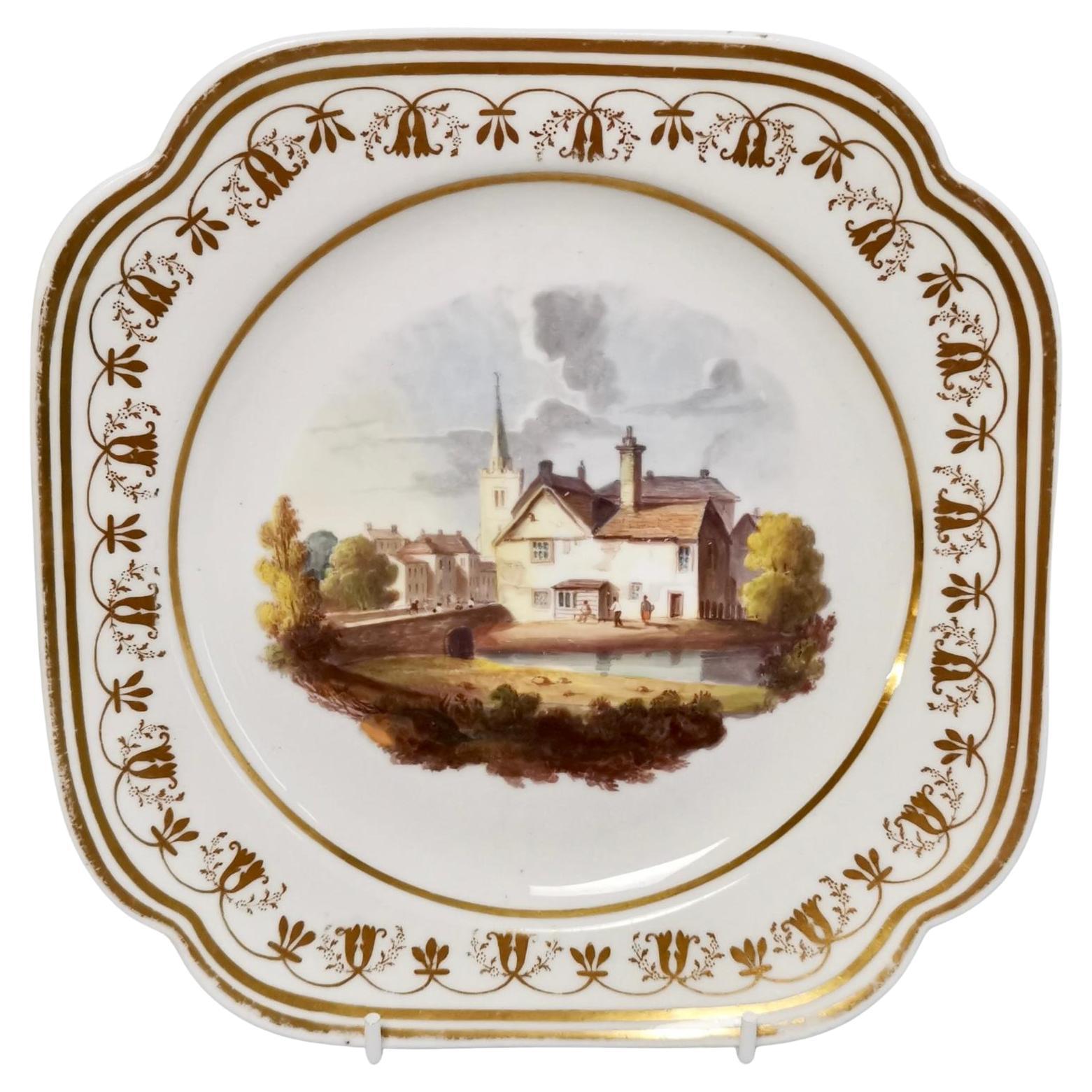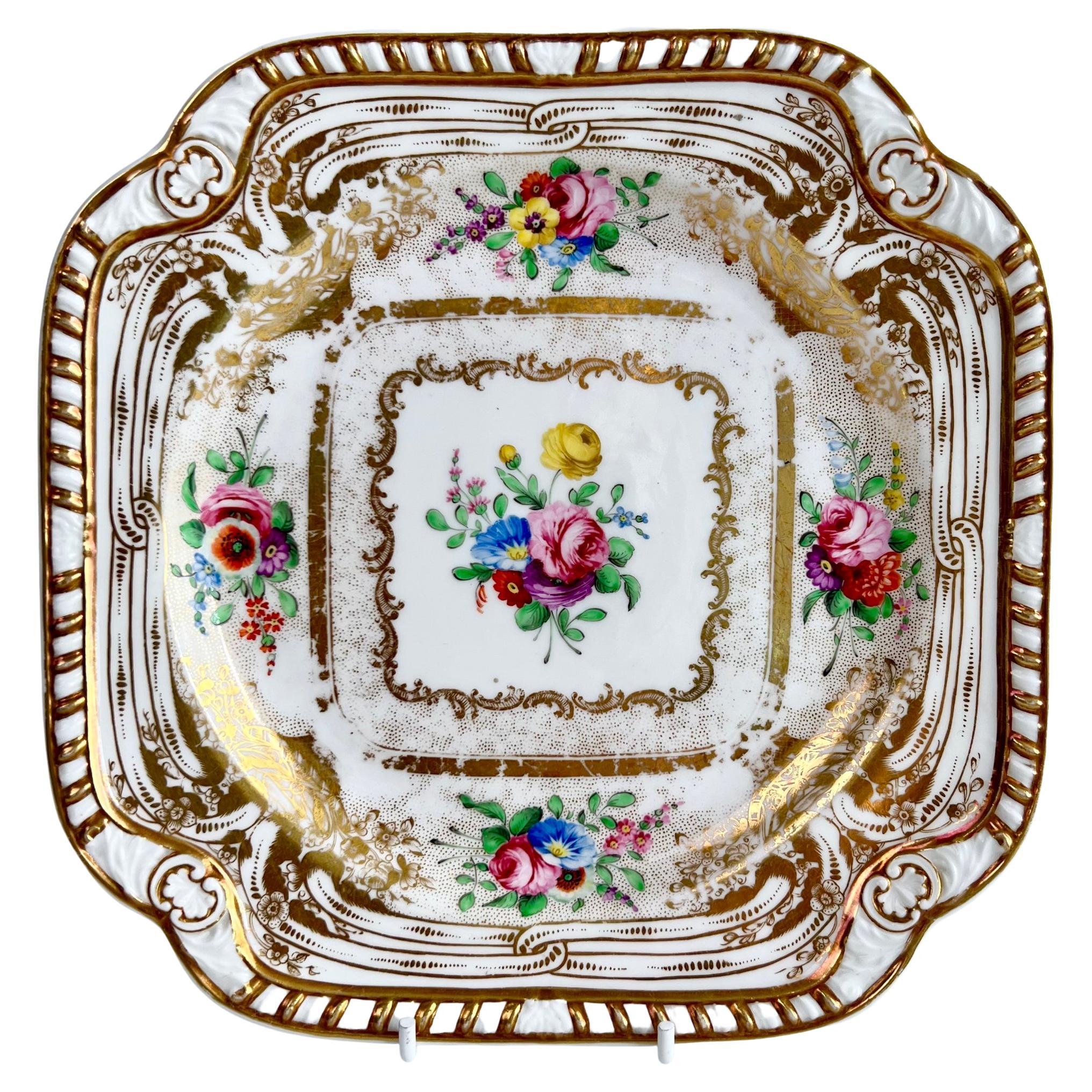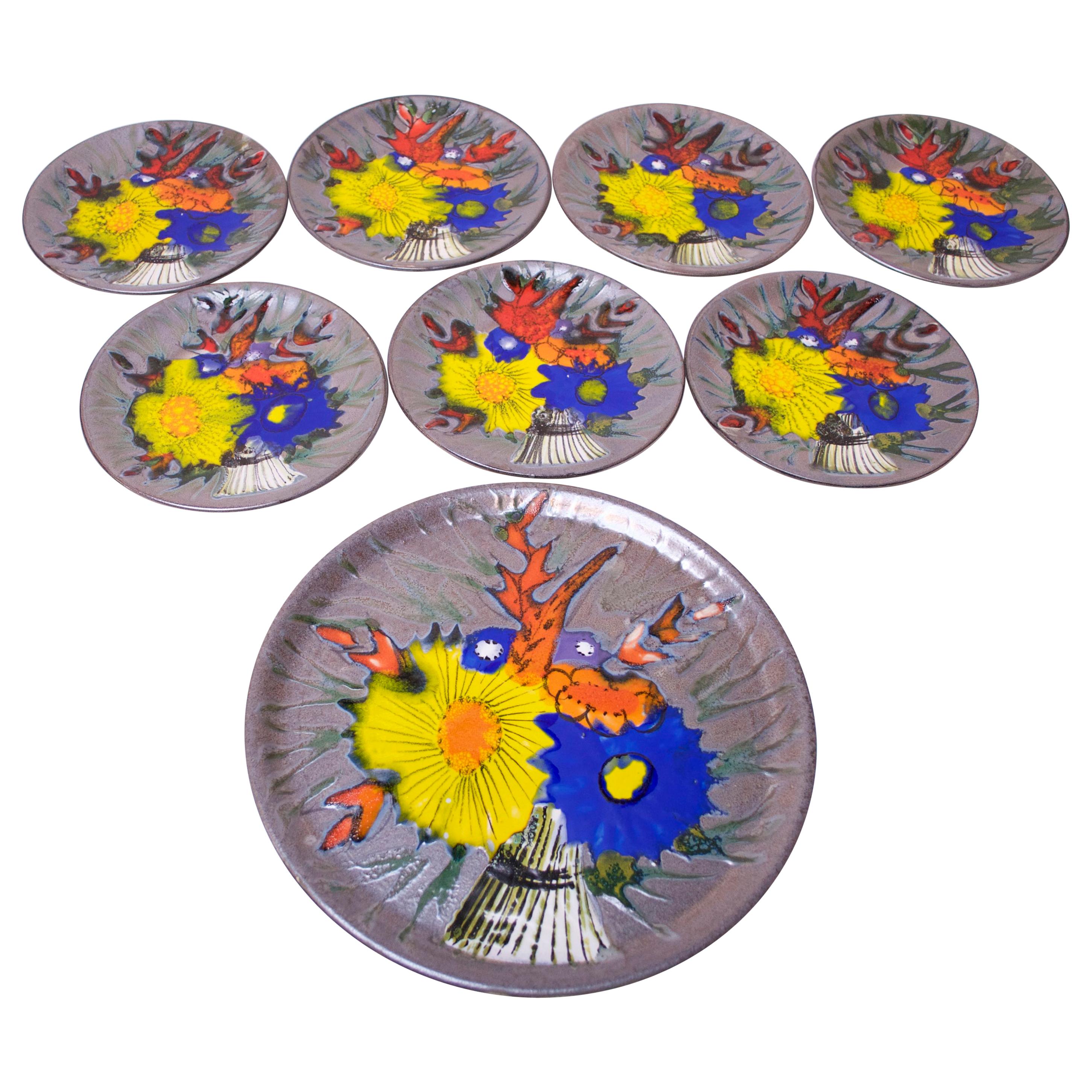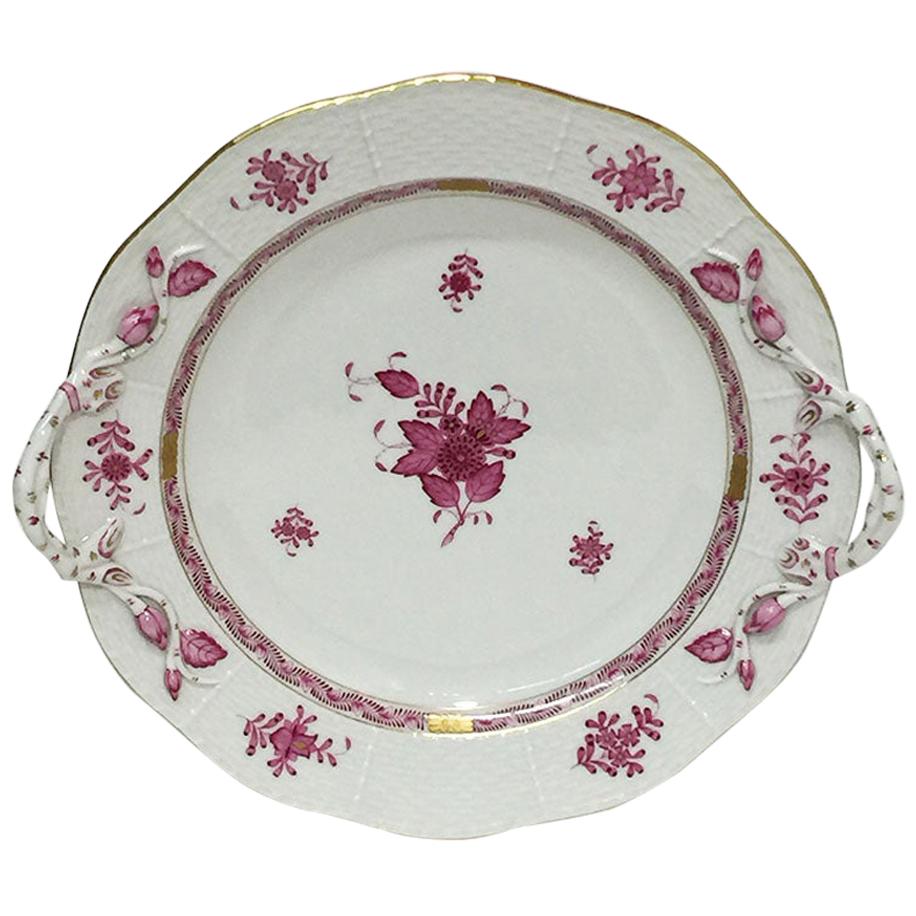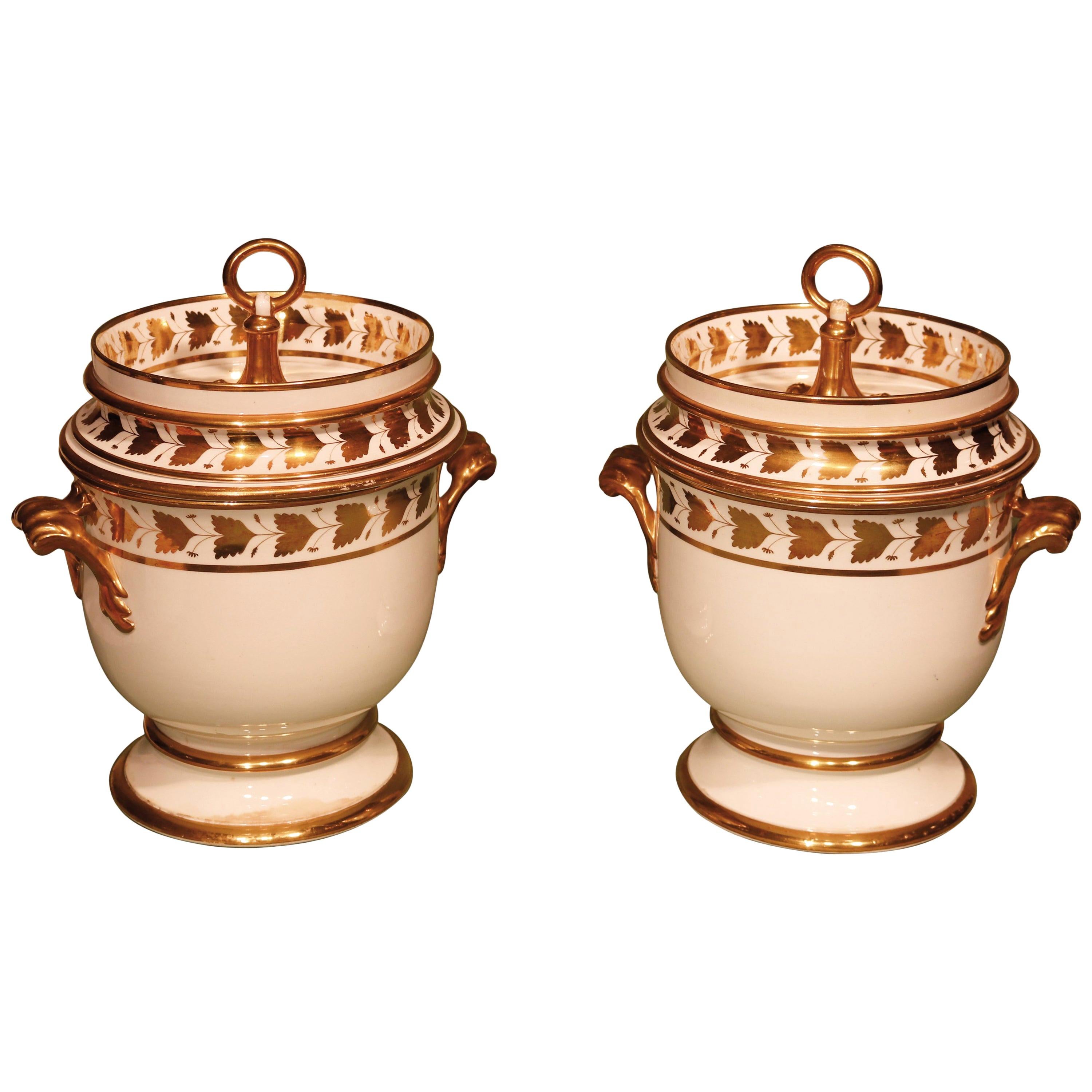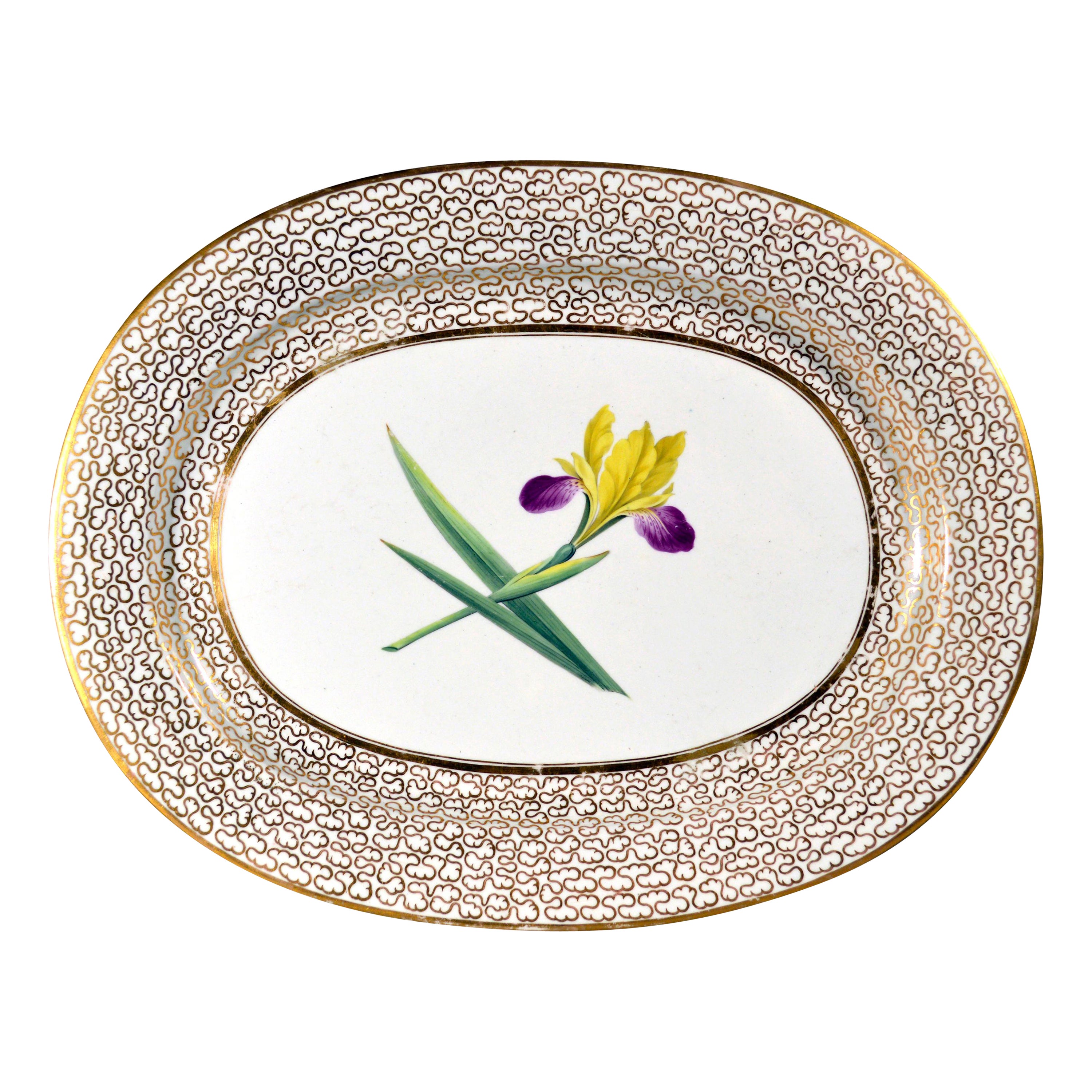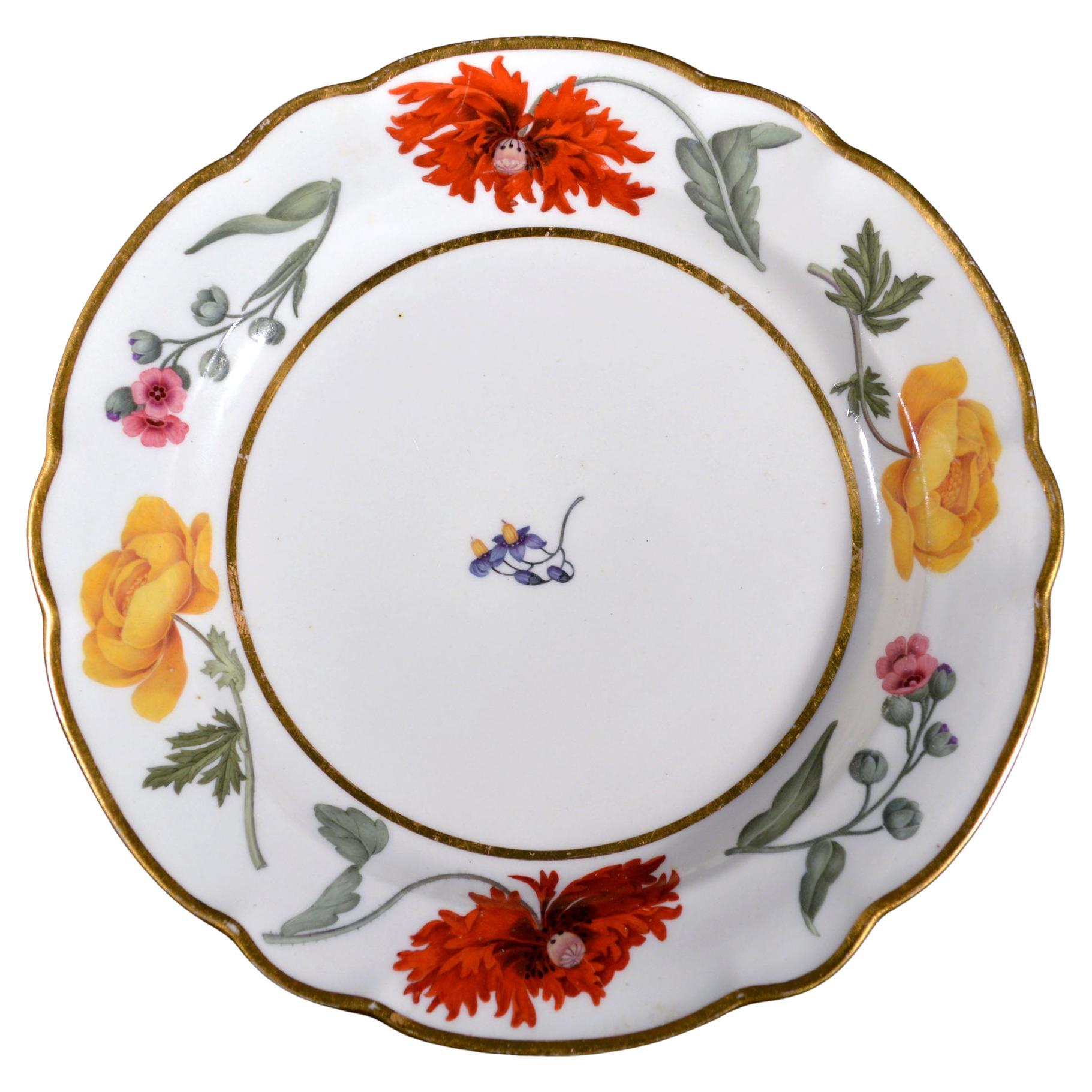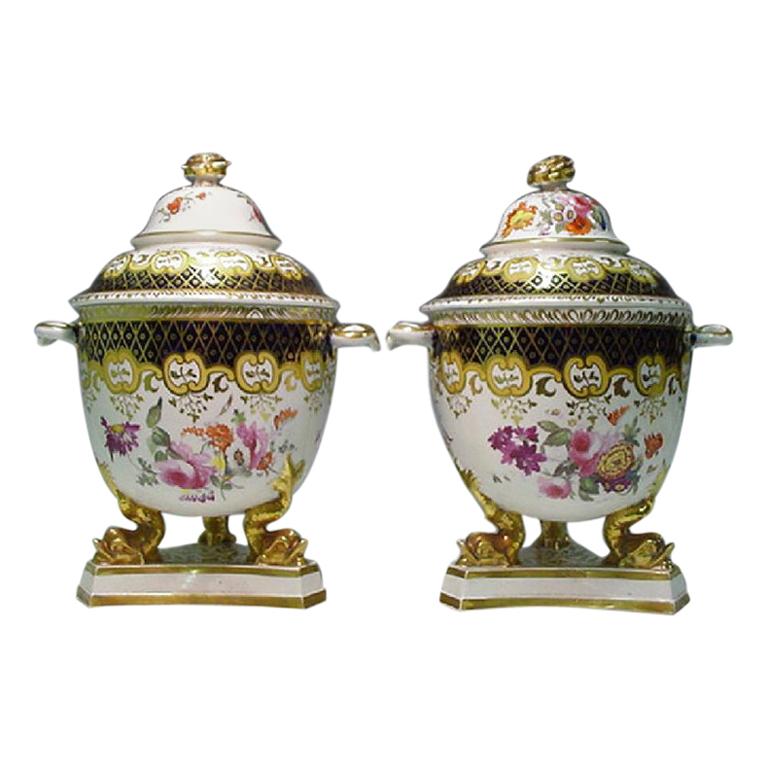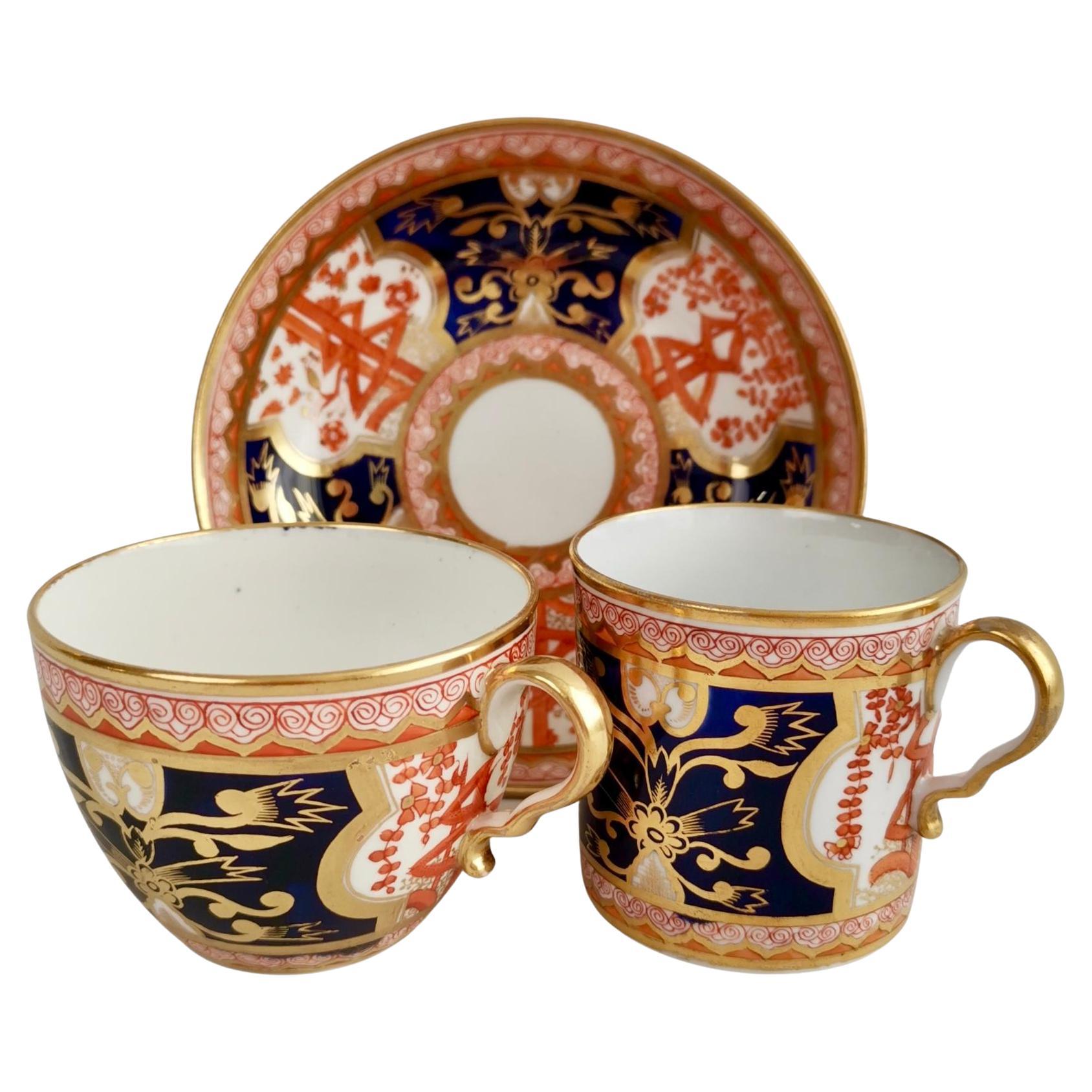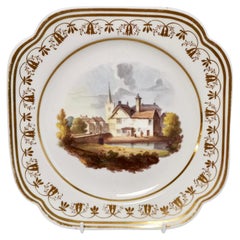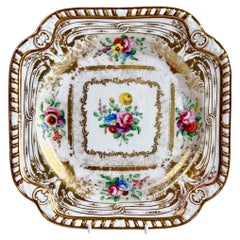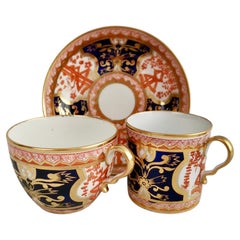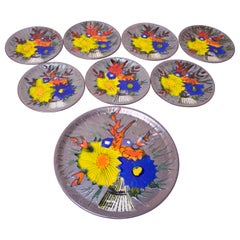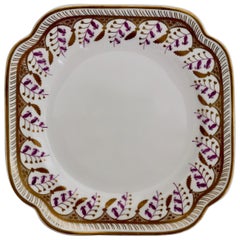
Porcelain Cake Plate, Spode Felspar, White with Harebell Pattern, Regency, 1826
View Similar Items
Want more images or videos?
Request additional images or videos from the seller
1 of 12
Porcelain Cake Plate, Spode Felspar, White with Harebell Pattern, Regency, 1826
About the Item
- Creator:Josiah Spode (Maker)
- Dimensions:Height: 1 in (2.54 cm)Width: 8.25 in (20.96 cm)Depth: 8.25 in (20.96 cm)
- Style:Regency (Of the Period)
- Materials and Techniques:
- Place of Origin:
- Period:
- Date of Manufacture:1826
- Condition:Wear consistent with age and use. Excellent condition without any damage, repairs or crazing or even wear, as visible in the pictures.
- Seller Location:London, GB
- Reference Number:Seller: A-SPO58b1stDibs: LU4805119938302
About the Seller
5.0
Gold Seller
These expertly vetted sellers are highly rated and consistently exceed customer expectations.
Established in 2016
1stDibs seller since 2019
208 sales on 1stDibs
Typical response time: 1 hour
More From This SellerView All
- Spode Felspar Porcelain Plate, Landscape Painting, Regency ca 1822By SpodeLocated in London, GBThis is a dessert plate made by Spode in about 1822, which was the Regency era. The plate is made of Felspar porcelain and decorated with a beautiful hand painted landscape scene. The plate would have belonged to a large dessert service of which each piece had a unique landscape; in fact I sold a dessert service in this pattern a while ago. Spode was the great pioneer among the Georgian potters in England. Around the year 1800 he perfected the bone china recipe that has been used by British potters ever since, and he was also the leading potter behind the technique of transferware, making it possible for English potters to replace the Chinese export china...Category
Antique 1820s English Regency Porcelain
MaterialsPorcelain
$320 Sale Price20% OffFree Shipping - Spode Felspar Square Dessert Plate, Gilt and Flowers, Regency 1824By SpodeLocated in London, GBThis is beautiful square dessert plate made by Spode around the year 1824. The set was made in the famous Spode Felspar china, which was a bright porcelain that included felspar rock, making it exceptionally robust and very suitable for large table services. This plate was a spare of a large dessert service that was sold previously. An identical service is on display in the Spode Museum in Stoke on Trent, on the original place where this service was produced. In a wonderful moment of serendipity, I happened to be standing and admiring that service exactly the moment the service this plate belonged to came up for auction - and I won the bid, enabling me to present it here to you! Josiah Spode was the great pioneer among the 19th Century potters in England. Around the year 1800 he perfected the bone china recipe that has been used by everyone ever since, and he was also the leading potter behind perfecting the technique of transferware, making it possible for English potters to replace the Chinese export china, which had come to an end around that time, with their own. This was fundamental to a thriving industry that would last for about 150 years and provide half the world with their tableware. In the early 19th Century Spode also made this "Felspar" porcelain, which was even stronger thanks to a large percentage of the strong felspar rock in the recipe. In the early 19th Century, dinner and dessert services were an important part of the social life of the elite, and particularly the dessert service had to be stunning in order to leave guests with a lasting impression of the wealth and power of the owner. This plate is part of such a show piece. The plate has the printed Spode Felspar Porcelain mark in puce, as well as a hand painted pattern number 3765. CONDITION REPORT The plate is in good undamaged antique condition, with its only flaw being some wear as visible in the pictures. Antique British porcelain...Category
Antique 1820s English Regency Porcelain
MaterialsPorcelain
$320 Sale Price20% OffFree Shipping - Spode Porcelain Teacup Trio, Red Imari Dollar Pattern, Regency, ca 1810By SpodeLocated in London, GBThis is a beautiful orphaned teacup made by Spode in about 1810. It bears a beautiful Japanese-inspired Imari pattern. Spode was the great pioneer among the Georgian potters in England. Around the year 1800 he perfected the bone china recipe that has been used by British potters ever since, and he was also the leading potter behind the technique of transferware, making it possible for English potters to replace the Chinese export china, which had come to an end around that time, with their own designs. This was fundamental to a thriving industry that would last for about 150 years and provide half the world with their tableware. Spode porcelain is regarded as one of the highest quality porcelains around; for a soft-paste porcelain it is surprisingly hard and fine, and has a wonderful bright white colour. The pattern on this can is called "Dollar" pattern, a very famous pattern that was used by English potters in the 18th and early 19th Century. It is obvious why it is called “dollar” - but its origin is less obvious! It is thought that this pattern was derived from a very old Chinese pattern depicting a tree with elaborate foliage that hides a Chinese character representing longevity or happiness. Traditionally, this went with a an image called “Taotie”, which was used on very ancient bronze vases...Category
Antique Early 1800s English Regency Porcelain
MaterialsPorcelain
$420 Sale Price / set20% OffFree Shipping - Spode Felspar Floral Dessert Service, Yellow, Butterfly Handles, circa 1822By SpodeLocated in London, GBThis is a stunning and very rare dessert service made by Spode in 1822, which was the Regency era. This beautiful service, which is in perfect condition, would be fantastic for a summer dinner party! The service is made of Felspar porcelain and decorated in a beautiful pale yellow colour with an "Oeil de Perdrix" pattern and top quality floral reserves. The service consists of two lidded sauce tureens with stands, two deep rectangular dishes, two lozenge shaped dishes, one square dish, and six square dessert plates Spode was the great Pioneer among the Georgian potters in England. Around the year 1800 he perfected the bone china recipe that has been used by British potters ever since, and he was also the leading potter behind the technique of transferware, making it possible for English potters to replace the Chinese export china...Category
Antique 1820s English Regency Porcelain
MaterialsPorcelain
- Spode Porcelain Teacup Trio, Lavender Blue with Flower Sprays, Regency ca 1815By SpodeLocated in London, GBThis is a beautiful "true trio" consisting of a teacup, a coffee cup and a saucer, made by Spode in about 1815. It is decorated with pattern 2234 with a striking lavender or periwinkle blue border and finely painted flower sprays. In the late 18th and early 19th Century a "true trio" is how cups and saucers were sold; as you would never drink tea and coffee at the same time, why invest in an extra saucer? Josiah Spode was the great pioneer among the Georgian potters in England. Around the year 1800 he perfected the bone china recipe that has been used by everyone ever since, and he was also the leading potter behind the technique of transferware, making it possible for English potters to replace the import of Chinese china that had come to an end around that time, with their own. This was fundamental to a thriving industry that would last for about 150 years and provide half the world with their tableware. This set is made in the famous "London" shape, which was brought out by Spode in 1812 and was quickly copied by all other makers. It then remained the most popular shape for about 10 years. The set is potted in fine white porcelain - by the year 1810 Spode had perfected his recipe for bone china and it became beautifully smooth, white, thin and translucent. All three items are marked with the red hand painted SPODE mark and the pattern number 2234. CONDITION REPORT The set is in excellent antique condition without any damage, repairs or crazing. There is some minimal wear as visible in the pictures...Category
Antique 1810s English Regency Porcelain
MaterialsPorcelain
$400 Sale Price / set20% OffFree Shipping - Spode Orphaned Porcelain Saucer, Chinoiserie Gilt Potted Flowers, Regency ca1820By SpodeLocated in London, GBThis is a beautiful deep orphaned saucer made by Spode around 1820. The saucer is decorated with a gorgeous Chinoiserie pattern of a group of potted flowers in gilt and grey. The sau...Category
Antique 1820s English Regency Porcelain
MaterialsPorcelain
$200 Sale Price20% OffFree Shipping
You May Also Like
- Set of Eight Vintage French Porcelain Enamel 'Floral' Cake PlatesLocated in Brooklyn, NYThis unique set of eight porcelain enamel cake plates includes one large serving plate and seven small plates. Each plate is marked ‘France’ on the...Category
Vintage 1950s French Mid-Century Modern Porcelain
MaterialsEnamel
- Herend Hungary Porcelain "Chinese Bouquet Raspberry" Round Dish/Chop/Cake PlateBy HerendLocated in Delft, NLHerend Hungary porcelain "Chinese Bouquet Raspberry" round dish/chop or cake plate Round dish/chop or cake plate Numbered with and marked with # 173/ AP (Apponyi Purple) Herend Hung...Category
20th Century Hungarian Porcelain
MaterialsPorcelain
- Regency Chamberlain Worcester Porcelain Large Botanical DishBy Chamberlains WorcesterLocated in Downingtown, PAAntique English Chamberlain Worcester porcelain large botanical specimen oval dish, circa 1815. The large Chamberlain Worcester dish is painted o...Category
Antique Early 19th Century English Regency Serving Pieces
MaterialsPorcelain
- Pair of 19th Century Spode Porcelain Ice-PailsBy SpodeLocated in London, GBAn early 19th century pair of porcelain ice-pails with gilt leaf decorated borders, part of a dessert service, comprising 20 plates, 3 shell dishes, 3 circul...Category
Antique Early 19th Century English George III Porcelain
MaterialsPorcelain
$5,503 / set - Flight & Barr Worcester Botanical Porcelain PlateBy Flight & Barr WorcesterLocated in Downingtown, PAFlight & Barr Worcester Botanical Porcelain plate, circa 1792-1800 The Flight & Barr porcelain dessert plate has a simple purple flower to the center with a gilt line surround. The wide, shaped rim is finely painted with three different alternating flowers- a yellow rose, a red carnation, and a pink double-headed plant with a gilded rim. Measure: Diameter: 7 3...Category
Antique Late 18th Century English Regency Porcelain
MaterialsPorcelain
- Rare Spode Porcelain Shell Decorated Vase Pattern 3930 C.1824By Josiah SpodeLocated in Exeter, GBAn incredibly beautiful and rare Spode porcelain vase decorated with shells to the front and flowers to the reverse. The shape name is "New Shape Fish Handled Beaker" and it was d...Category
Antique 19th Century English Porcelain
MaterialsPorcelain
Recently Viewed
View AllMore Ways To Browse
Georgian Porcelain Tableware
Spode Felspar Porcelain
Spode Felspar
Aynsley Coffee Set
Barry Bryne
Biedermeier Tea Cup
Black Jasperware Tea Pot
Blue Plates Japonesque
Bolognese Dog Figurine
Bow Pickle Dish
Christian Ludwig Attersee On Sale
Dagoty Swan Cup
Dresden Place Card Holder
Dresden Schumann Bavaria
Drum Shape Silver Teapot
Edwin Knowles
France Limoges Coronet
Garibaldi Ceramics
